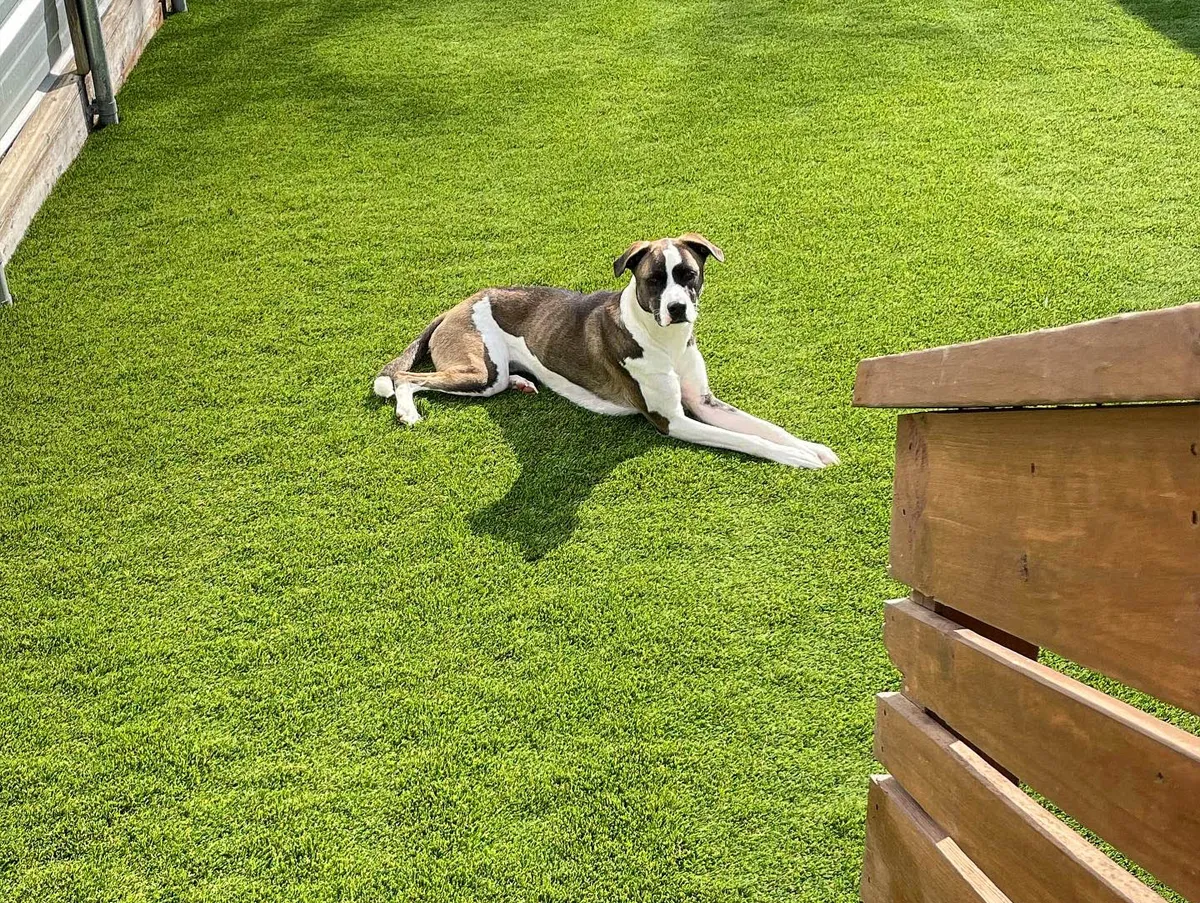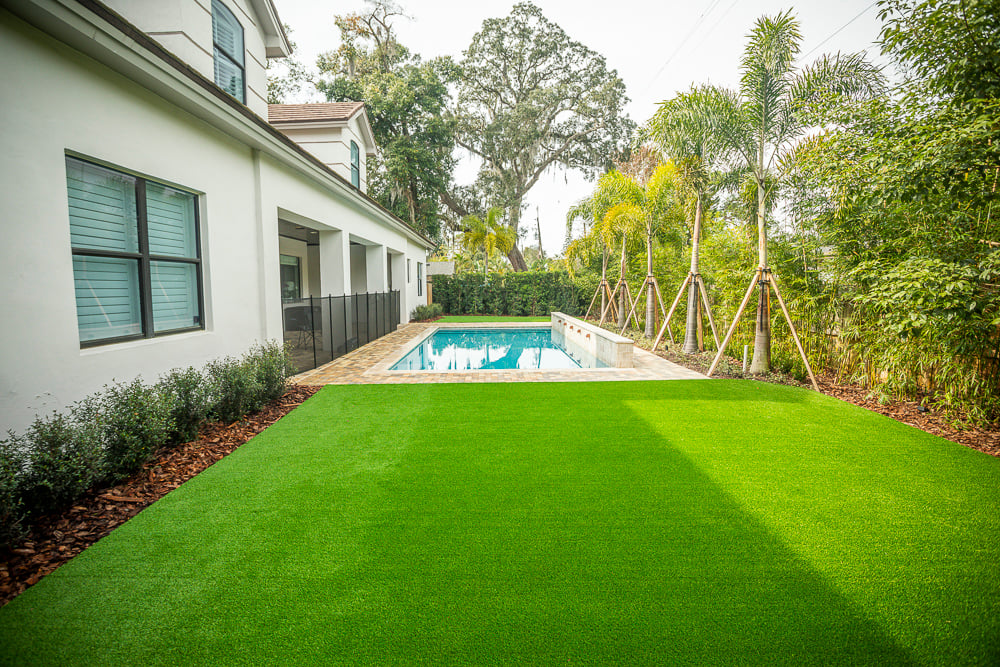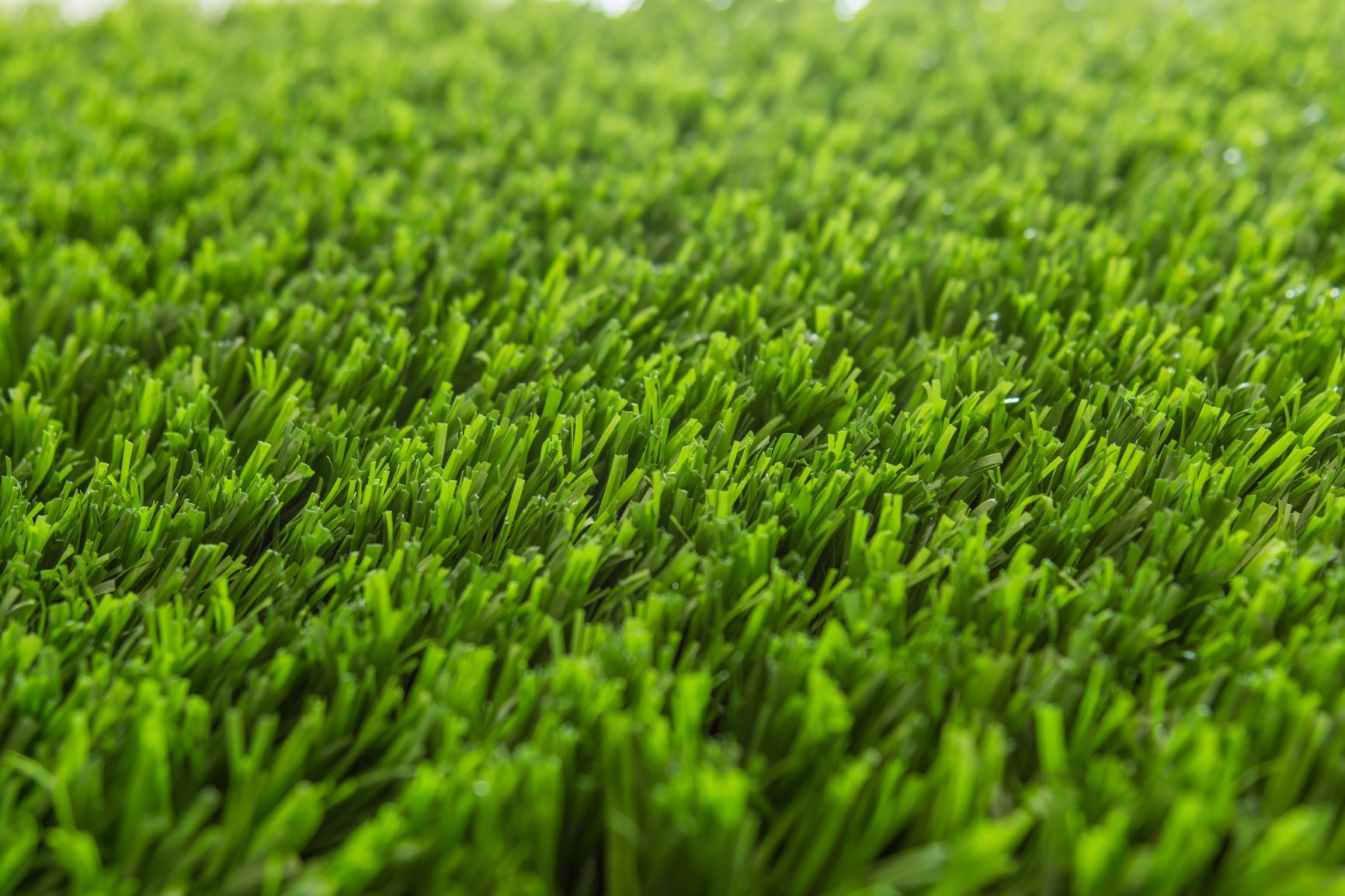Delve Into the Environmental Advantages of Opting for Artificial Turf Solutions
The adoption of synthetic lawn services provides an engaging chance to address pressing ecological challenges. By dramatically decreasing water use and minimizing the application of hazardous chemicals, these choices not only promote sustainable landscape design but likewise secure regional ecosystems.
Water Conservation Advantages
Among the most significant advantages of synthetic grass is its capability to preserve water. Typical turf yards call for significant watering, especially in areas susceptible to dry spell or water restrictions. On the other hand, synthetic grass does not require watering, considerably decreasing the total demand for water sources. This function is specifically advantageous in arid areas where water shortage is a pressing concern.
By removing the need for regular watering, artificial grass adds to sustainable landscape techniques and assists mitigate the environmental effect of too much water consumption. The conservation of water prolongs to the decrease of drainage, which can lead to soil erosion and river contamination.
In addition, the installation of synthetic grass allows property owners and communities to assign water resources extra successfully, concentrating on necessary usages such as alcohol consumption water and farming. The shift towards synthetic grass not just advertises responsible water usage but also lines up with more comprehensive ecological objectives targeted at protecting all-natural resources.
As communities significantly focus on sustainability, the water preservation advantages of synthetic grass provide an engaging situation for its adoption in business and property landscaping tasks.
Reduced Chemical Use
The shift to synthetic grass dramatically reduces the reliance on chemical therapies frequently utilized in all-natural turf upkeep. Typical grass management typically involves the application of herbicides, fertilizers, and chemicals to promote development and control parasites. These chemicals can present risks to human wellness, local wild animals, and the atmosphere, adding to dirt and water contamination.
In comparison, fabricated turf removes the need for these damaging compounds. As soon as installed, it calls for minimal maintenance, mainly including regular cleaning and seldom infill replenishment. This reduction in chemical use not only benefits the immediate atmosphere but likewise adds to wider ecological stability. By minimizing the launch of artificial substances into the community, synthetic grass promotes healthier dirt and water systems.
In addition, the lack of chemical drainage associated with man-made turf setups assists secure neighborhood waterways from pollution, supporting aquatic life and preserving biodiversity. Artificial turf companies phoenix. As neighborhoods progressively prioritize lasting techniques, deciding for synthetic lawn provides a viable service that aligns with environmental preservation objectives. Through this shift, residential or commercial property owners can enjoy rich eco-friendly spaces without compromising eco-friendly health, leading the method for a much more sustainable future
Lower Carbon Impact

Additionally, the installment of fabricated grass can result in considerable water preservation. All-natural yards call for considerable amounts of water for watering, which not just includes in the carbon footprint related to water removal and therapy but likewise pressures local water sources. In contrast, man-made lawn needs marginal maintenance, needing no watering, therefore substantially reducing water use and its linked energy costs.
Furthermore, the durability of man-made lawn adds to its lower carbon effect. With a lifespan of up to 15 years or more, the need for constant substitutes is lessened, leading to much less waste and reduced power intake in production and taking care of typical lawn choices. In general, synthetic grass provides a lasting alternative for eco aware landscape design.
Habitat Preservation
Habitat conservation is a crucial consideration in the debate over landscape design selections, particularly when comparing synthetic grass to natural turf. All-natural turf lawns frequently call for substantial maintenance, including using herbicides, chemicals, and plant foods, which can negatively affect local communities. These chemicals can seep into the soil and rivers, hurting indigenous vegetation and animals and interrupting local environments.
In contrast, fabricated grass presents a possibility to decrease the eco-friendly footprint of landscape design. By selecting synthetic grass, homeowners useful link can lessen the disruption of all-natural habitats associated with typical lawn treatment practices. Synthetic grass gets rid of the requirement for harmful chemicals, thereby securing close-by wild animals and keeping the integrity of bordering ecological communities. In addition, the installment of artificial lawn can cause the conversion of former yard areas right into more biodiverse landscapes, such as pollinator gardens or native plant areas, which can sustain regional wild animals.
Inevitably, the change to fabricated lawn not just preserves water and minimizes maintenance initiatives yet likewise promotes an extra unified connection in between human tasks and the natural surroundings, promoting habitat conservation while doing so.
Long-Term Sustainability
Lasting sustainability is an important consider evaluating the advantages of synthetic grass over conventional grass lawns. Among one of the most considerable advantages of synthetic grass is its sturdiness; it can last approximately 15-20 years with very little upkeep, whereas natural lawn requires regular reseeding and substitute. This long life lowers the demand for consistent resources, such as water, plant foods, and pesticides, which are important for keeping a healthy and balanced turf lawn.
Additionally, synthetic grass adds to a reduction in carbon discharges connected with grass treatment equipment. Traditional grass commonly call for gas-powered lawn mowers, leaners, and blowers, every one of which add to air contamination. Arizona artificial turf. On the other hand, synthetic grass removes the need for such tools, promoting a cleaner atmosphere
Moreover, the production of synthetic grass significantly uses recycled products, enhancing its sustainability profile. As suppliers take on environment-friendly practices, the environmental footprint of fabricated lawn continues to reduce.

Conclusion
The adoption of man-made lawn remedies provides substantial environmental advantages, including considerable water conservation, decreased reliance on harmful chemicals, and a lower carbon footprint. Artificial useful source grass aids in preserving natural habitats by decreasing land disruption and advertising long-lasting sustainability with the usage of resilient products. Collectively, these elements emphasize the potential of synthetic grass to add positively to ecological health and wellness and supply a feasible alternative to traditional landscaping practices in an increasingly resource-conscious world.
In comparison, synthetic grass does not require watering, dramatically decreasing the total demand for water sources. By minimizing the release of synthetic substances into the ecosystem, synthetic turf advertises healthier dirt and water systems.
Moreover, the installation of man-made grass can result in significant water preservation. In comparison, fabricated lawn needs marginal upkeep, discover this calling for no watering, consequently substantially minimizing water use and its associated energy costs.
